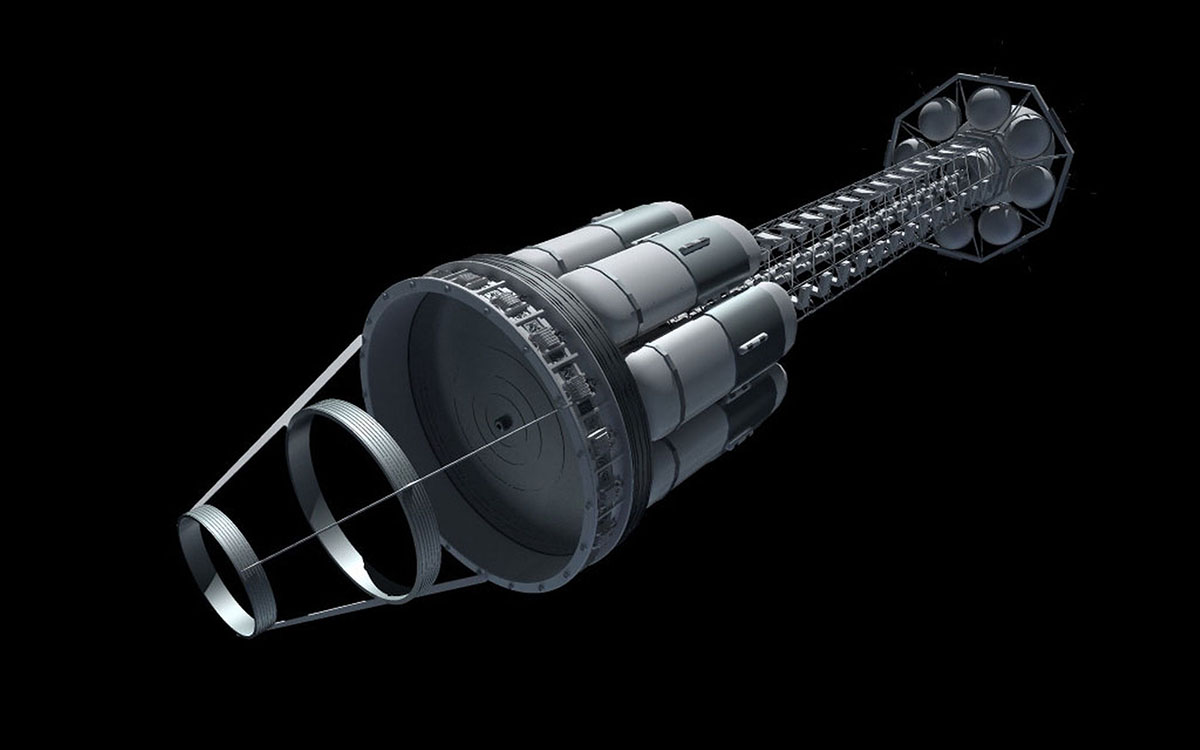tau zero and the bis aim for the stars, literally

Traveling to other stars is easy for only two things: tiny, nearly massless particles, and sci-fi spacecraft. Since the distances between stars and their solar systems are often measured in trillions of miles, traveling even to nearby suns is a journey for which we’re simply not ready today. But what about the near future? The Tau Zero Foundation, which runs the Centauri Dreams blog, and the British Interplanetary Society think that the very first generation of interstellar probes could be built with technologies which aren’t that far out of reach and that we could be close to building one if we made a few updates to a concept spaceship conceived by the BIS in the mid-1970s: the Daedalus. Continuing with Greek mythology, the new project is named Icarus. It’s intended to help us study the outer edges of our solar system in greater detail, and be able to reach Barnard’s Star, one of our second closest stellar neighbors, in just 50 years with a plausible, fusion-powered propulsion system.
When it comes to its design pedigree, Icarus is nothing to take lightly. The initial design for Project Daedalus was lead by Alan Bond, a rocket engineer behind the UK’s attempt at single stage to orbit flight (or SSTO), the HOTOL concept, and who’s currently one of the managing directors of Reaction Engines, which is working on what they hope will be the first SSTO jet: the Skylon. His hybrid jet/rocket engine known as Sabre received an encouraging, though small, €1 million grant intended for proof of concept testing and his venture could very well encourage SSTO development among space tourism companies. The second incarnation of Daedalus, the Icarus program, was reviewed by physicist Richard Obousy who studies warp drive technology, produced one of the first designs for a scientifically plausible warp craft, and whose work was used in a post which tried to put some concrete numbers on what it would take to build a warp drive. But while Icarus has some serious potential and represents a pretty realistic attempt to get to the stars, it does have some major issues with which to cope for both intra-solar system missions and interstellar flight.
Like Daedalus, the Icarus concept is planning to use a fusion reactor using an electron beam for ignition. But where the previous incarnation planned on using helium-3, which was to be extracted from the atmospheres of gas giants with balloon-like structures and cryogenic technology, Icarus aims to fuse the more conventional and readily available tritium and deuterium. The goal is still the same: to accelerate the craft to roughly 12% of the speed of light to get to the Barnard’s star in about half a century by igniting fuel pellets some 250 times per second over years of non-stop acceleration. Since Icarus would be completely robotic, engineers wouldn’t be concerned with delicate and redundant life support systems or creating an artificial farm to feed astronauts. It would make the whole project much simpler and more affordable. We’d just have to build computers capable of operating for 50 years as they’re bathed by violent cosmic rays in interstellar space without crashing or data corruption occurring in their hard drives. Which is actually a pretty difficult task.
Operating the said computers from roughly 36 trillion miles would also be a serious challenge since it could take up to 12 years to send a command and find out whether it was successfully executed. And if it hasn’t, the craft has been off course or doing the wrong thing for six years and there’s nothing you’d really be able to do to correct it. On top of all this, the original benchmark set for Icarus and which Daedalus was supposed to meet in its design specifications is no longer relevant. Bond was working on a probe capable of reaching Barnard’s Star in a human lifetime because it was thought that a planet was orbiting the alien sun. Today, there seems to be no reliable evidence for this idea and the closest confirmed clutch of planets nearby is orbiting Epsilon Eridani, about 10.5 light years away. With the current maximum speed for Icarus, it would take 87.5 years for a one way trip. This is just a little longer than a typical human lifetime and much longer than the working lifetime of the engineers who will be working on the probe. In fact, it would take generations to send a robot on a long, one way trip to another interesting solar system and hear back from it with no guarantee of success.
Realistically, we’d need to send an entire fleet of Icarus probes to the same destination and hope that at least one of them makes it intact and in good working order. The project would take billions and require up to four generations of experts who know the craft inside and out to oversee the entire 98 years between liftoff and the first signal back from another solar system. With space exploration being near the bottom of the government’s priority list and a lack of a serious strategy for the immediate future at NASA and other space agencies, we are simply not ready for a project that could last 115 years if we factor in construction time and pre-flight tests. If we really want to travel to the stars within both a human lifetime, and a realistic time span for a project on a human scale, we need to think beyond really fast probes and investigate what it would take to bend the fabric of space and time, or really think outside the box about what it means to be a truly space faring species. It may sound ridiculously implausible after considering something as relatively grounded as Icarus, but if we’re really serious about exploring space beyond our own solar system, we need radical approaches and with all its design pedigree and realism, Icarus simply isn’t radical enough.





